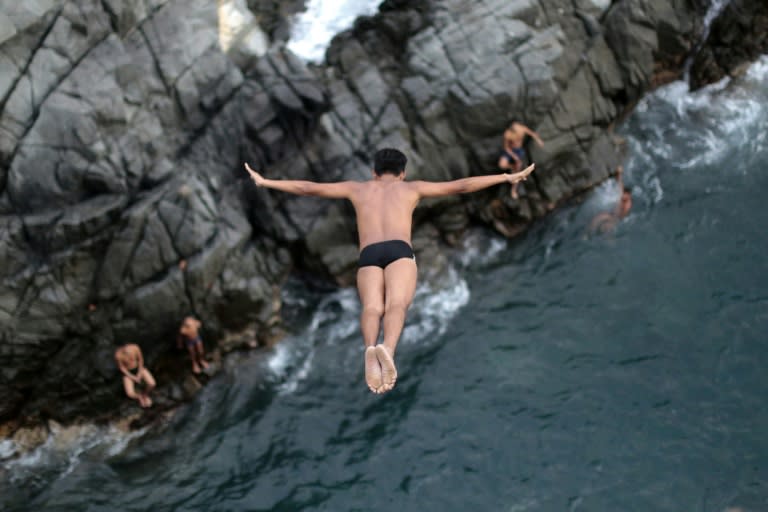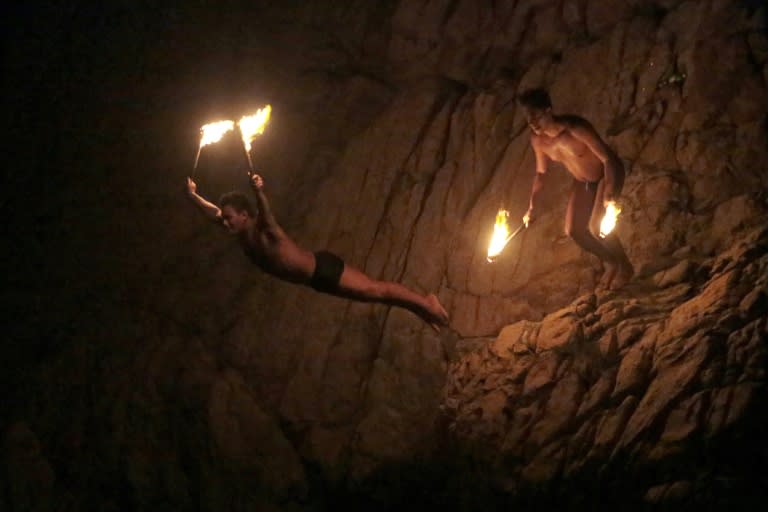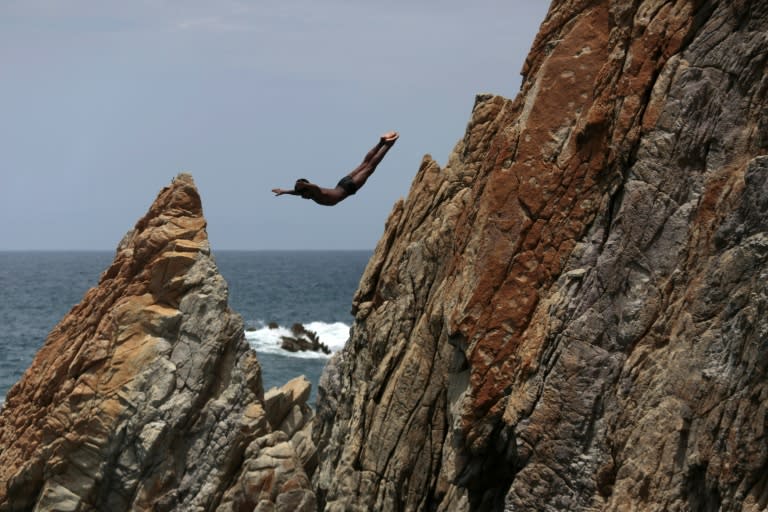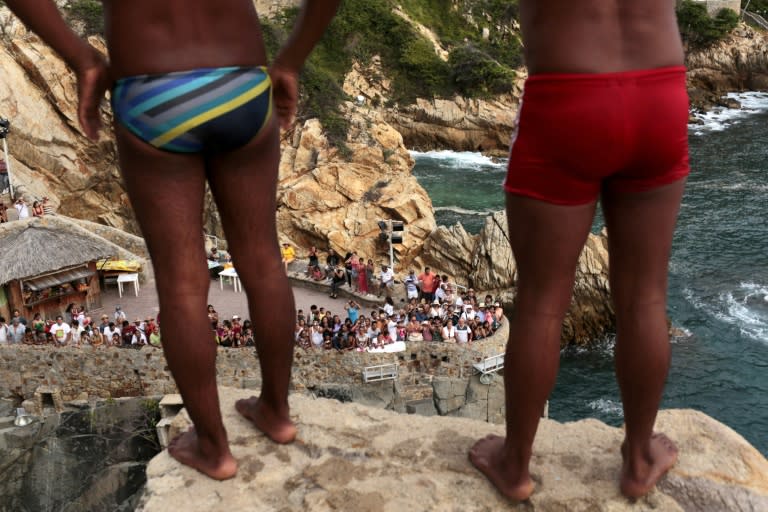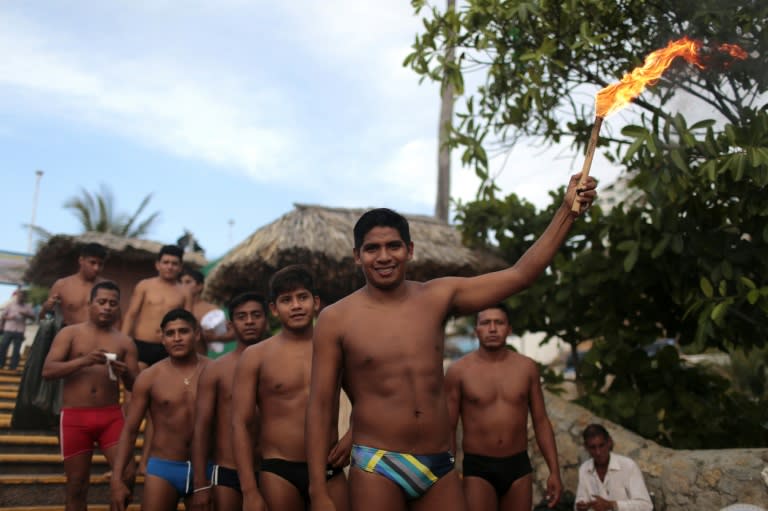Acapulco cliff divers plunge into new unknown
Cliff divers in Acapulco say they never forget their first time: the leap into the void, the feeling of flying, the shock of hitting the water at high speed. Across the generations, whole families of divers have earned their living wowing tourists from around the world with the 35-meter (115-foot) plunge off La Quebrada, the rock face that looms above the Mexican resort city's Pacific coast. But the seemingly fearless daredevils who keep this eight-decade tradition alive now face a new kind of risk: their livelihoods are under threat from a wave of violence sweeping Acapulco and scaring away tourists. Nearly 500 people have been killed so far this year as drug cartels wage war in the city. The bloodshed has taken a toll on the tourism industry. A decade ago, 150 cruise ships a year visited Acapulco. Today, the number has fallen to around 10. That is worrying for the 62 full-time cliff divers who make their living at La Quebrada. "The tourists need to come back," said Monico Ramirez, a 62-year-old retired diver whose son and grandson now carry the flame. The violence doesn't threaten anyone not caught up in the drug trade, Ramirez insisted. "It's mainly a settling of scores," he said. Guerrero, the state where Acapulco is located, has had a year of terrible press. The state made headlines over the shocking disappearance of 43 students in September last year. Prosecutors say the students were abducted by corrupt police in the city of Iguala, three hours inland from Acapulco, and handed over to a drug gang that killed them and burned their bodies. Acapulco has had its share of bad publicity, too. Several mass graves have been found on its outskirts, and the leader of one of the groups searching for the 43 missing students was shot dead just outside the city earlier this month. The unrest spells bad news for the divers, whose salaries come from the admission fees tourists pay to watch them, plus tips and sales of food, drinks and souvenirs. The work pays about $550 a month, according to Ramirez, and comes with health benefits, professional training and one day off per week -- a great job for a country where more than 55 million people live in poverty. - Occupational hazards - It's a job for people comfortable with risk. As they stand over the abyss, preparing to thread through the rocky outcrops in a three-second free-fall, the divers have to time their jump to coincide with an incoming wave, or risk cracking their skulls on the rocky bottom. The water is just four meters deep. They will hit it at 90 kilometers (55 miles) per hour. "You have to visualize your dive," said Ramirez's 43-year-old son, Jorge. Divers also face frequent injuries, including detached retinas, ruptured eardrums, broken forearms and neck and back trouble. "Divers' sight gets worse over time, like pelicans, which eventually go blind from plunging into the water and end up crashing into the rocks," said Jorge. "At first I was afraid of the sea," said Jorge Antonio, Jorge's 24-year-old son and the latest to carry on the family trade. "But little by little, I came to like it." In the 80 years that professional divers have been taking the plunge off La Quebrada, not one has been killed, said Monico. "That's surely thanks to the Virgin of Guadalupe, who watches over us," he said. Before each jump, the divers pray to a statue of the Virgin that sits atop the cliff. - Kennedy, Tarzan and Elvis - The tradition of diving off La Quebrada started with a dare between local fishermen and soon became an iconic tourist attraction. There is a whiff of nostalgia in the sea spray around the cliffs. In a small museum, black-and-white photos depict Acapulco's glory days, when the likes of John F. Kennedy, Frank Sinatra, Orson Welles and Walt Disney visited La Quebrada to watch the divers. The cliffs were made famous by "Tarzan" star Johnny Weissmuller, whose character jumped off them in the 1948 movie "Tarzan and the Mermaids." Elvis Presley's character did the same in "Fun in Acapulco" (1963). But neither actually made the dives depicted in their movies. They left the job to local stunt doubles -- and Elvis never even set foot in Acapulco. Weissmuller on the other hand fell in love with the city. He and his friend John Wayne bought a hotel perched on the cliffs, which welcomed a stream of Hollywood jet-setters in the 1950s. Urban legend has it that Weissmuller's stunt double, Raul Garcia, died filming the jump immortalized in the "Tarzan" movie. The myth is true in a way -- but 50 years too early. Garcia, a local celebrity, died in 2004, at the age of 76, after injuring himself while taking one last dive from the cliffs. Weissmuller for his part died in 1984 -- also in Acapulco. Like his stunt double, he is buried along the city's Pacific coast.

